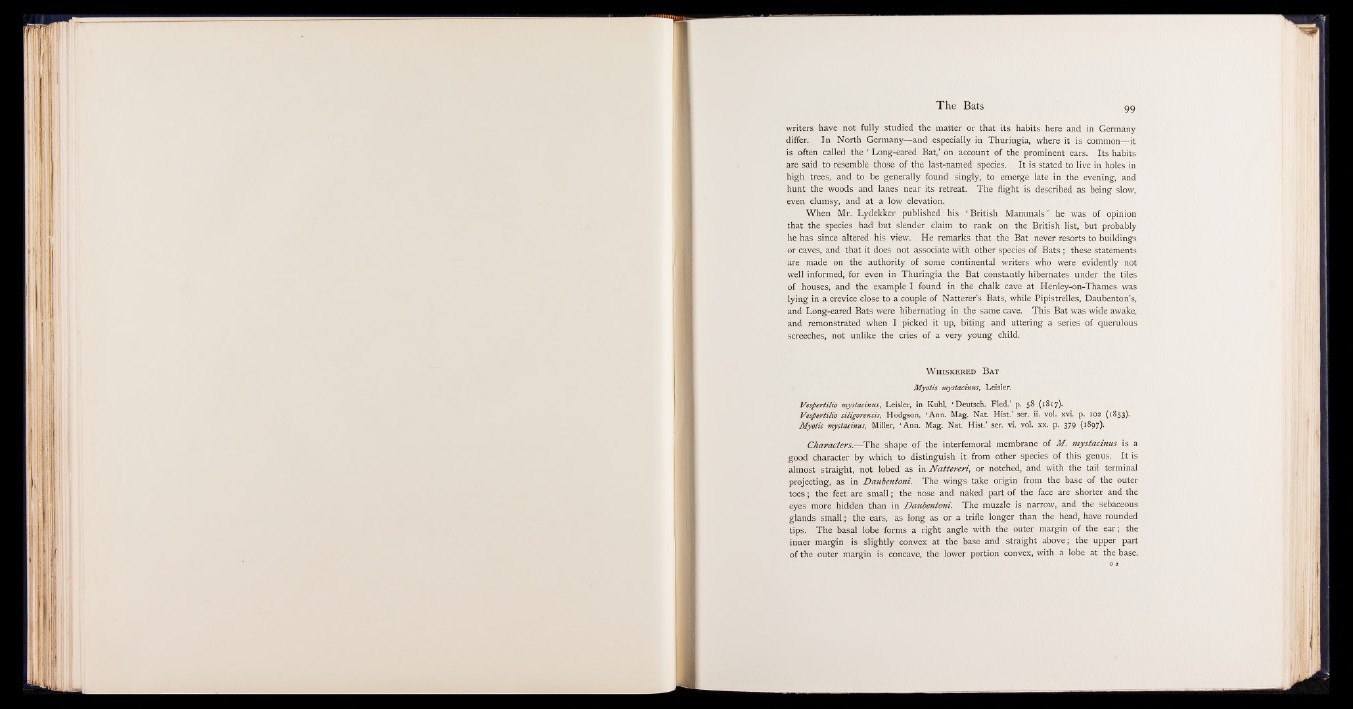
The Bats 9 9
writers have not fully studied the matter or that its habits here and in Germany
differ. In North Germany— and especially in Thuringia, where it is common— it
is often called the ' Long-eared Bat,’ on account of the prominent ears. Its habits
are said to resemble those of the last-named species. It is stated to live in holes in
high trees, and to be generally found singly, to emerge late in the evening, and
hunt the woods and lanes near its retreat. The flight is described as being slow,
even clumsy, and at a low elevation.
When Mr. Lydekker published his 4 British Mammals ’ he was of opinion
that the species had but slender claim to rank on the British list, but probably
he has since altered his view. He remarks that the Bat never resorts to buildings
or caves, and that it does not associate with other species of Bats ; these statements
are made on the authority of some continental writers who were evidently not
well informed, for even in Thuringia the Bat constantly hibernates under the tiles
of houses, and the example I found in the chalk cave at Henley-on-Thames was
lying in a crevice close to a couple of Natterer’s Bats, while Pipistrelles, Daubenton’s,
and Long-eared Bats were hibernating in the same cave. This Bat was wide awake,
and remonstrated when I picked it up, biting and uttering a series of querulous
screeches, not unlike the cries of a very young child.
W h i s k e r e d B a t
Myotis mystacinus, Leisler.
Vespertilio mystacinus, Leisler, in Kuhl, ‘ Deutsch. Fled.’ p. 58 (1817).
Vespertilio siligorensis, Hodgson, ‘ Ann. Mag. Nat. Hist.’ ser. ii. vol. xvi. p. 102 (1853).
Myotis mystacinus, Miller, ‘ Ann. Mag. Nat. Hist.’ ser. vi. vol. xx. p. 379 (1897).
Characters.— The shape of the interfemoral membrane of M. mystacinus is a
good character by which to distinguish it from other species of this genus. It is
almost straight, not lobed as in Nattereri, or notched, and with the tail terminal
projecting, as in Daubentoni. The wings take origin from the base of the outer
toes; the feet are small; the nose and naked part of the face are shorter and the
eyes more hidden than in Daubentoni. The muzzle is narrow, and the sebaceous
glands small; the ears, as long as or a trifle longer than the head, have rounded
tips. The basal lobe forms a right angle with the outer margin of the ear; the
inner margin is slightly convex at the base and straight above; the upper part
of the outer margin is concave, the lower portion convex, with a lobe at the base.